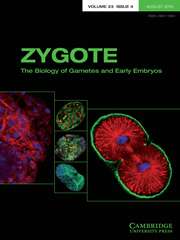No CrossRef data available.
Article contents
Obesity alters testicular gene expression in mice, monkeys and humans
Published online by Cambridge University Press: 21 March 2025
Abstract
Obesity, a global health issue, is associated with numerous diseases and has been shown to affect male reproductive health by inducing endocrine hormonal changes, chronic inflammation, oxidative stress and epigenetic alterations in reproductive cells. This study investigates the impact of obesity on testicular gene expression across mice, monkeys and humans, identifying 730 conserved testis-specific genes. High-fat diet-induced obesity upregulates GNG5, INHA, MSH5, SLC30A8 and SLC7A4 in testes, suggesting their potential as regulatory targets in testicular damage associated with obesity. Single-cell analysis reveals species-conserved expression patterns of SLC7A4 in Sertoli cells and SLC30A8 in SPG cells. It also confirmed that SLC30A8 and SLC7A4 were significantly upregulated in the testes of spontaneously obese mice. The findings highlight the potential of these genes as regulatory targets in obesity-related testicular dysfunction, providing insights into male reproductive health impairments caused by obesity.
- Type
- Research Article
- Information
- Copyright
- © The Author(s), 2025. Published by Cambridge University Press



